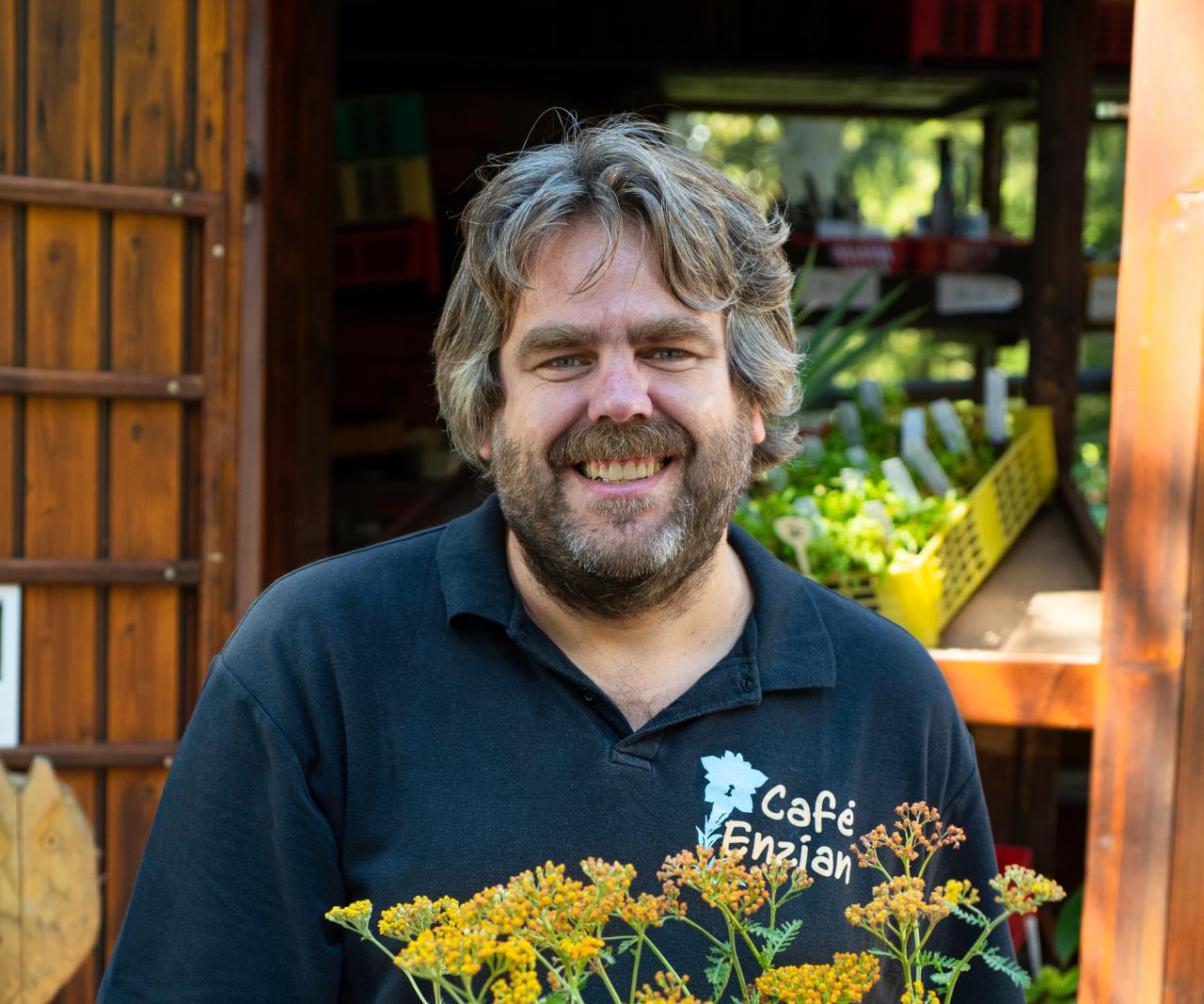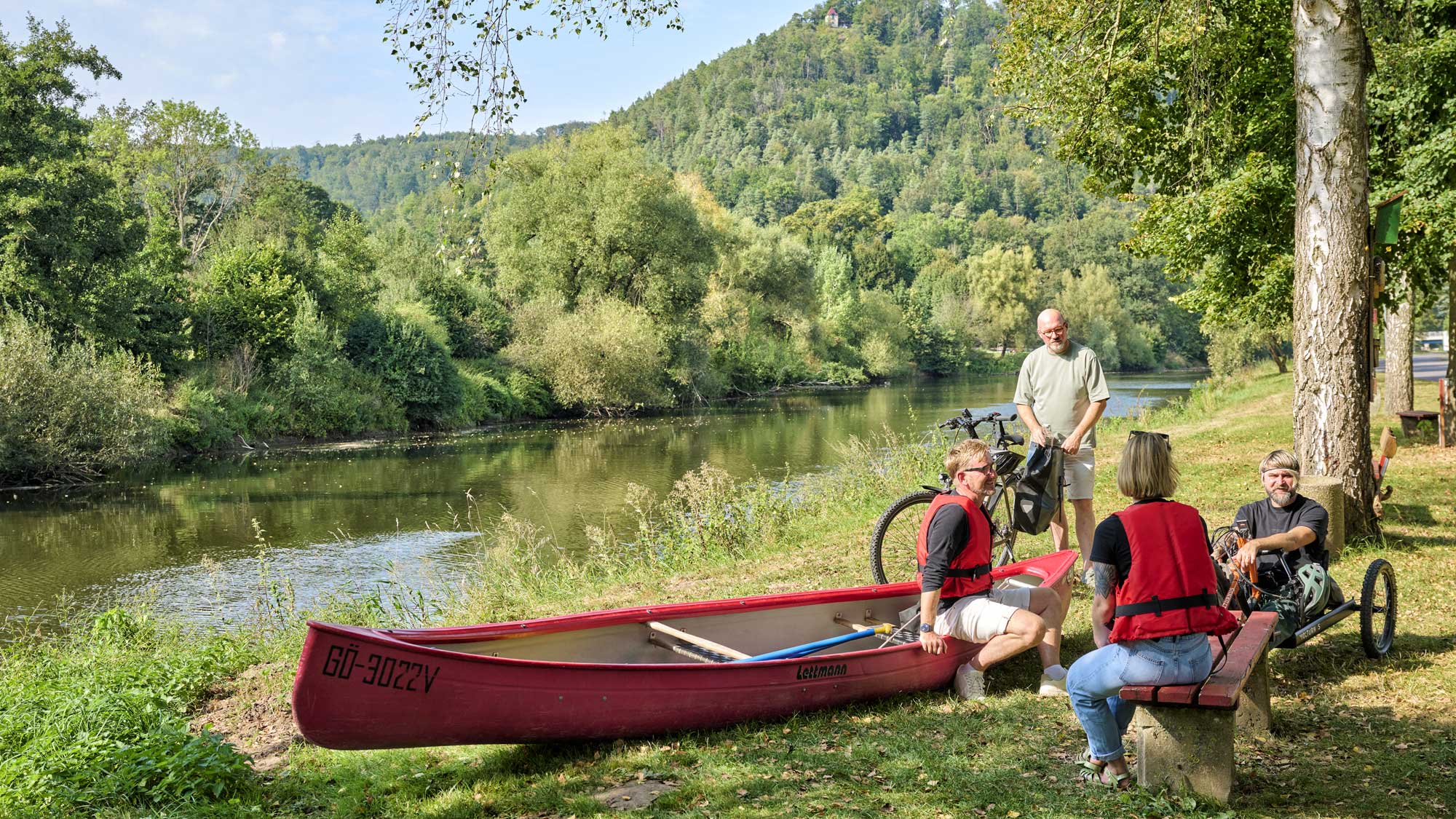You're in the right place! Whether in nature, in the middle of the city, for families, in the countryside, historic or traditional: among Thuringia's TOP hosts, everyone will find exactly the right address.
Rennsteig Botanical Garden
The whole world in one garden
The director of the Rennsteig Botanical Garden
“The willow is a good example,” says Frank Meyer. “Everyone knows the willow. It is pointed out to you as a child, and then you know for the rest of your life: that is what a willow looks like. And then people are completely bowled over when I show them this one here.” He bends down and points to a small plant that is peeking out just a few centimetres above the ground. You have to look closely to see it. “This is also a willow. A thyme-leaf willow. It is forty years old and still tiny.” He stands up again. “This tendency to focus on a single variety of a plant, even if there are hundreds of different varieties, is something that almost all the visitors have in common,” he says. “And then when they come here, they learn that there is not only a single variety of gentian, but 450 different ones, and that they can see fifty of them here. These little aha moments – they happen here all the time.”

The director of the Rennsteig Botanical Garden Frank Meyer ©Sabine Braun, TTG
A garden with a long tradition
The Rennsteig Botanical Gardens have a long tradition. Avid gardeners and botanists have been coming to this verdant oasis on the outskirts of Oberhof since 1970. At an altitude of around 850 metres, the main ridge in the Thuringian Forest has a particular microclimate that allows plant varieties to thrive that would otherwise only be found in the mountainous regions of the world. And that is why visitors here are able to admire the adonis rose from the Himalayas, the Asian globeflower from western Siberia, and the gentian from Caucasia. Overall, there are 4,000 different varieties in an area of seven hectares. Most of them are under strict protection. Many have already become extinct in the wild.
Habitats have also become increasingly smaller, says Frank Meyer, and climate change is doing the rest. And this means that, for many plant species, gardens such as this are the last refuge. The gardens belong to a network of 220 botanical organisations that exchange seeds from endangered species so as to safeguard their survival. As you would expect, the employees at the gardens are extremely protective of the plants in their care: “You could say that our gardeners are on first-name terms with every plant,” says Meyer.
Rarely botanical beauty
He and his team keep a particularly close eye on the pulsatilla montana, Natal aster and willow gentian. This is because visitors have been known on occasion to dig up plants and take them home. As many varieties have died out in locations in the wild, the theft of a handful of flowers could mean the loss of an entire species. Thankfully, most visitors – many of whom have travelled some distance – merely appreciate the beauty of their surroundings, and don’t dig into anything except perhaps a slice of Thuringian Forest blueberry cake at Café Enzian before they leave. At the exit, there is also a small stand where you can purchase a souvenir: ice plants for €4, Armeria juniperfolia for €3. The thyme-leaf willow is not for sale. If you want to see it, you have to visit the gardens, and look very closely in the right flower bed. Not a bad option either.

© Sabine Braun, Thüringer Tourismus GmbH
Accessibility
Did you like this story?
Visitors' information
Angebote
Booking
You might also be interested in ...
















